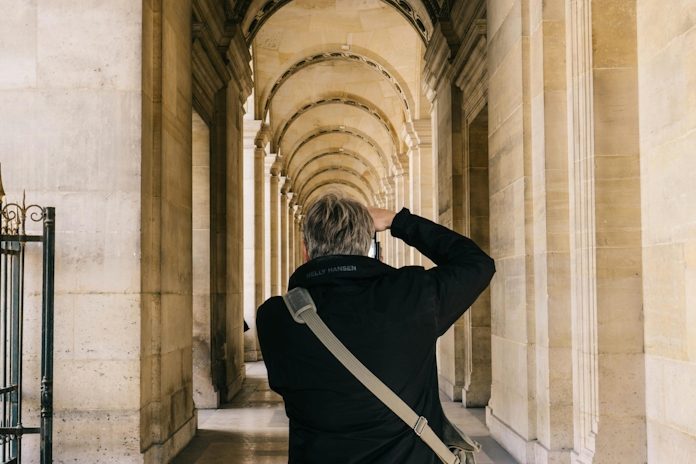
Thanh Nhan LE / Pexels
3 Famous Photographers Who Smoke Weed
Exploring the intersection of cannabis culture and photographic artistry through documented cases of renowned image-makers who use cannabis
Key Takeaways
- Cannabis has been integral to photographic creativity – From 1960s counterculture documentation to modern commercial work, photographers have used cannabis to enhance visual perception and reduce creative anxiety.
- Contemporary photographers report specific benefits – Street photographer Sayan Biswas notes cannabis “completely revamps my perception” while Dan Ginn finds it helps him be “far more observant when I’m high” (attributed to The Phoblographer, Apr 20, 2022).
- The cannabis photography industry has professionalized – What began as counterculture documentation has evolved into a legitimate commercial specialization requiring advanced technical skills like focus stacking and macro photography (e.g., ~200-frame stacks for trichome studies).
- Legal complications remain serious – Despite state legalization, federal prohibition creates severe immigration consequences for non-U.S. citizen photographers, who can face inadmissibility even in legal states.
- Historical patterns show community building – Cannabis facilitated artistic connections
- Modern consumption favors controlled dosing – Some photographers report preferring low-dose edibles (microdoses) for predictability rather than smoking, prioritizing functional enhancement over intoxication (attributed to The Phoblographer, Apr 20, 2022).
- Quality cannabis photography requires technical expertise – Professional cannabis photographers use techniques similar to jewelry photography, with some stacking up to ~200 photos to capture single trichomes.
- The relationship between cannabis and photography continues evolving – From personal use to professional documentation, cannabis remains a significant element in photographic culture
1. Robert Mapplethorpe
Robert Mapplethorpe’s extensive substance use included marijuana, consumed almost daily for twenty years starting in the late 1960s. His consumption pattern involved combining cannabis with amphetamines, Quaaludes, acid, MDA, cocaine, and amyl nitrite, which became an integral part of his sexual experimentation and influenced his boundary-pushing photographic work. While his polydrug use represents historical patterns that carry significant health risks, his documentation of the 1970s–80s underground culture remains influential. His work demonstrates how cannabis was embedded in artistic communities during the prohibition era.
2. Sayan Biswas
Street photographer Sayan Biswas directly attributes cannabis with transforming his photographic vision, stating “Under the influence of weed, even the everyday mundane things seem artistic” and that marijuana helps him “be interested in people and pick up my everyday activities.” He emphasizes that cannabis “completely revamps my perception” and contributes to “decreasing reliance on post-processing tools and increased control over thoughts.” As someone who identifies as “very shy,” Biswas finds cannabis helps him connect with subjects he might otherwise avoid. His experience reflects how cannabis can address social anxiety that impedes street photography.
3. Dan Ginn
Photographer and editor Dan Ginn reports using precisely dosed 3mg THC gummies to enhance his photographic work, noting, “I’m far more observant when I’m high, which mostly comes down to feeling more relaxed.” He explains that “A small dose of THC strips away the anxiety that comes with the pressure of wanting to make a good photograph” and helps him “tap into my sensitive side.” His controlled approach represents how some contemporary photographers report preferring low-dose edibles (e.g., ~3mg THC) for predictability, prioritizing functional enhancement over intoxication. This microdosing approach allows him to maintain technical competence while accessing enhanced creative perception.
Cannabis Resources for Photographers
Photographers interested in integrating cannabis into their creative practice can explore Herb’s strain guides to find varieties that enhance focus for shooting days or promote relaxation during post-production work. For those seeking local communities, Herb’s dispensary directory allows browsing by city to find cannabis-friendly spaces and connect with like-minded creatives. Staying updated on industry trends and new products is easy through Herb’s bi-weekly newsletter, which delivers curated cannabis updates directly to photographers’ inboxes for Herb’s millions-strong community.
Frequently Asked Questions
Does cannabis actually make photographers more creative?
Evidence is mixed. Many artists report changes in perception—reduced anxiety, heightened pattern noticing—that they feel help them see scenes differently, while others experience distraction or weaker working memory. Creativity is multi-factor: environment, preparation, and craft often matter more than any single substance. If you experiment, do so legally, keep doses low, and review the work later when sober.
What are best practices for photographing cannabis (buds, trichomes, concentrates)?
Treat it like jewelry photography: diffuse lighting, a sturdy tripod, and macro optics to minimize distortion. Use focus stacking so micro-details remain sharp across depth—advanced practitioners report stacks from dozens up to ~200 frames for trichome studies. Control dust/static and color-balance for natural greens. Always follow local law and licensing requirements for commercial shoots.
Are there immigration risks if I’m a non-U.S. citizen who uses or documents cannabis?
Yes. Even where cannabis is legal under state law, federal immigration rules can treat admissions of use, possession, or industry employment as negative factors, including for naturalization good-moral-character assessments. Practitioner advisories recommend caution and legal counsel if immigration status is at stake. When in doubt, get advice before discussing use at the border or in applications.
What approaches do creatives mention most often?
Anecdotally, some prefer low-dose (“microdose”) THC for reduced anxiety while preserving control over focus and motor skills. Responses vary widely; the same milligram amount can feel very different across individuals and contexts. Start low and give edibles time to onset before considering more. Avoid consumption before paid or safety-critical shoots.
How should I cite artists’ experiences responsibly in an article like this?
Use primary sources: the artist’s own interviews or verified posts, or reporting from reputable outlets. For sensitive topics (drug use, legal issues), add two independent sources when possible and avoid sensationalism. Attribute clearly with concise 3–5-word anchor text tied to the claim. If a quote cannot be verified, paraphrase without quotation marks or omit it.
Herb Recommended Products:
READ MORE
